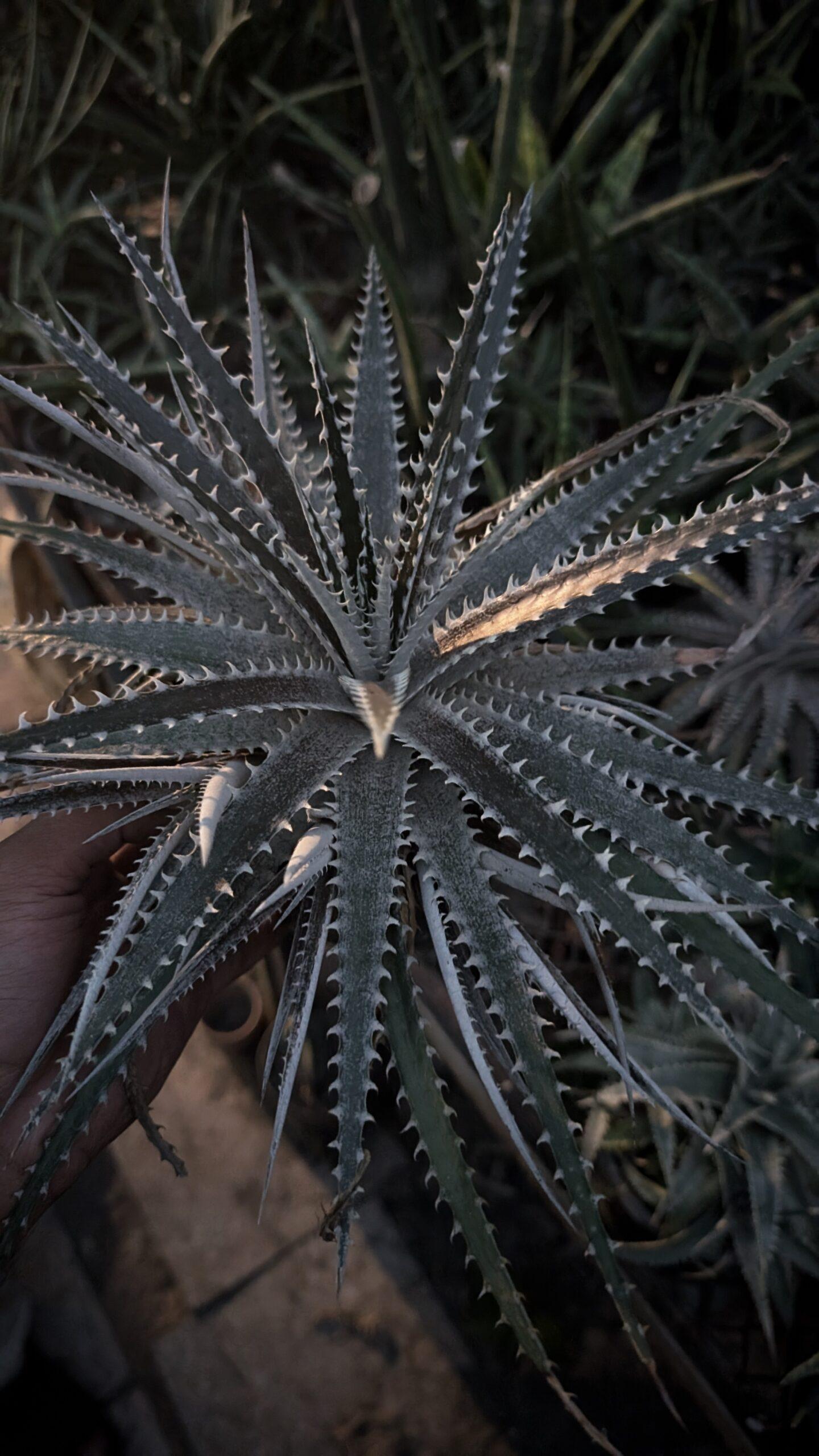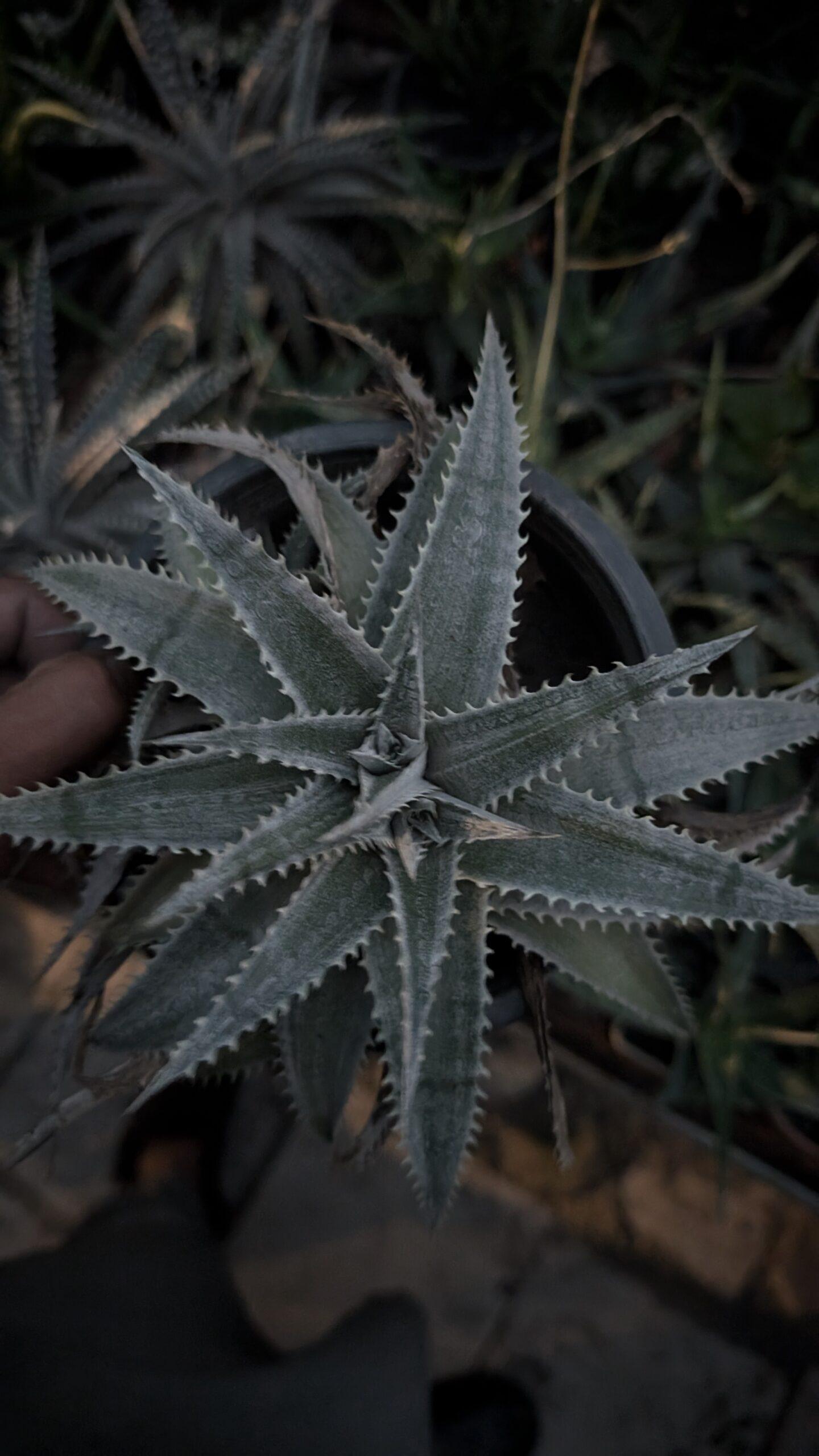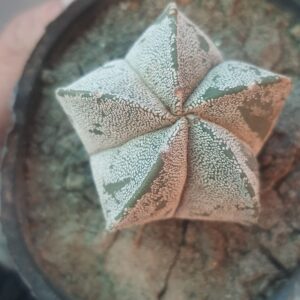Dyckia Fosteriana:
An Unusual and Robust Cactus for Fans of Succulents
The distinctive rosette shape, silver-gray leaves, and exceptional endurance of the Dyckia fosteriana succulent enthral both gardeners and collectors. Though its pointy, thorny leaves give it a cactus-like appearance, this Brazilian bromeliad is actually a member of the Bromeliaceae family, not the Cactaceae. Everything you need to know about caring for Dyckia fosteriana, including light, soil, watering, and propagation methods, will be covered in this extensive guide so you can grow this plant to its maximum potential.
Why Is Dyckia fosteriana Unique?
Few other plants can thrive in the harsh conditions as the Dyckia fosteriana can, demonstrating its flexibility and resilience. Its exquisite architecture, which frequently resembles agave or cactus, gives desert landscapes, rock gardens, and containers an exotic feel.
Important Characteristics of Dyckia fosteriana:
Among succulents, Dyckia fosteriana is unique due to its metallic silver-gray foliage and spiky, rosette-shaped structure. Here are a few noteworthy aspects:
Rosette Shape: It has a symmetrical rosette design made up of thick, pointy leaves.
Texture and Colour of the Leaf: Thick, rough, somewhat metallic leaves that are silver-gray or bronze-tinted.
Flowering: In spring and summer, it adds seasonal interest with long spikes of tiny orange or yellow flowers.
Hardiness: It is ideal for desert and subtropical settings because it can withstand high temperatures.Succulent aficionados who appreciate unique, striking plants that can survive arid circumstances will find this plant very appealing due to its hardy appearance and drought resistance.
Ideal Conditions for Dyckia fosterina Growth
Although Dyckia fosteriana is versatile, like are many succulents, it will flourish with particular attention catered to its natural habitat in Brazil. Here’s how to arrange this plant in the best possible way.
Light Needs for Fosteriana Dyckia:
In order to preserve its striking silver-gray hue and crisp structure, Dyckia fosteriana thrives in bright, indirect sunlight. Although it must be applied gradually to avoid leaf burn, direct sunlight aids in the development of this plant’s distinctive colouration.
Protecting Dyckia fosteriana from Sunburn:
To avoid damaging the leaves, gradually introduce this plant to full sun over a few days when switching from inside to outdoor illumination.Preferences for Temperature and Humidity
Extremely resilient, this plant can withstand temperatures ranging from roughly 35°F to 100°F (2°C to 38°C). Because Dyckia fosteriana thrives in low humidity environments, it can be found in arid, desert-like regions.Frost Protection and Cold Tolerance
The plant can withstand freezing temperatures on occasion, but sustained frost might harm it. Cover the plant or bring it inside during the winter months if you live in an area where frost is common.
Conditions of the Soil for Optimal Growth:
For Dyckia fosteriana, soil that drains quickly is essential. Perlite or sand mixed with cactus or succulent soil guarantees proper drainage, avoiding root rot and simulating the plant’s natural environment.
Fertilisation and Watering Fosteriana Dyckia
Given that Dyckia fosteriana is tolerant of drought and susceptible to root rot if overwatered, watering is one of the most crucial parts of its care. Guidelines for appropriate fertilisation and irrigation are provided below.Schedule for Watering Dyckia fosteriana
Water Dyckia fosteriana deeply but sparingly during the spring and summer when it is actively developing. Before watering again, let the soil entirely dry out. As the plant goes into a dormant period in the autumn and winter, irrigation should be reduced.
Preventing Overwatering Problems
Overwatering is the greatest risk to Dyckia fosteriana since it can result in root rot. Use a pot with drainage holes at all times, and water carefully, particularly during the winter when the plant need less water.Tips for Fertilising for Healthful Development
Fertilising Advice for Healthy Growth: Strong growth and brilliant colour can be promoted by using a slow-release, balanced fertiliser once in the spring. Steer clear of high-nitrogen fertilisers as they may cause excessively soft leaves, which is not indicative of the plant’s inherent toughness.Picking the Proper Fertiliser for Fosteriana Dyckia:
Only use a half-strength diluted cactus or succulent fertiliser throughout the growing season. It is not required to fertilise during dormancy, and doing so could cause the soil to become salted.
Repotting and Dyckia fosteriana PropagationDyckia fosteriana Repotting and Propagation Advice
Dyckia fosteriana doesn’t require frequent repotting because of its moderate growth rate, but it should be replanted every few years to keep the soil healthy. It can be multiplied through seeding or division.
Boota Online (@boota.pk) • Instagram photos and videos








Reviews
There are no reviews yet.